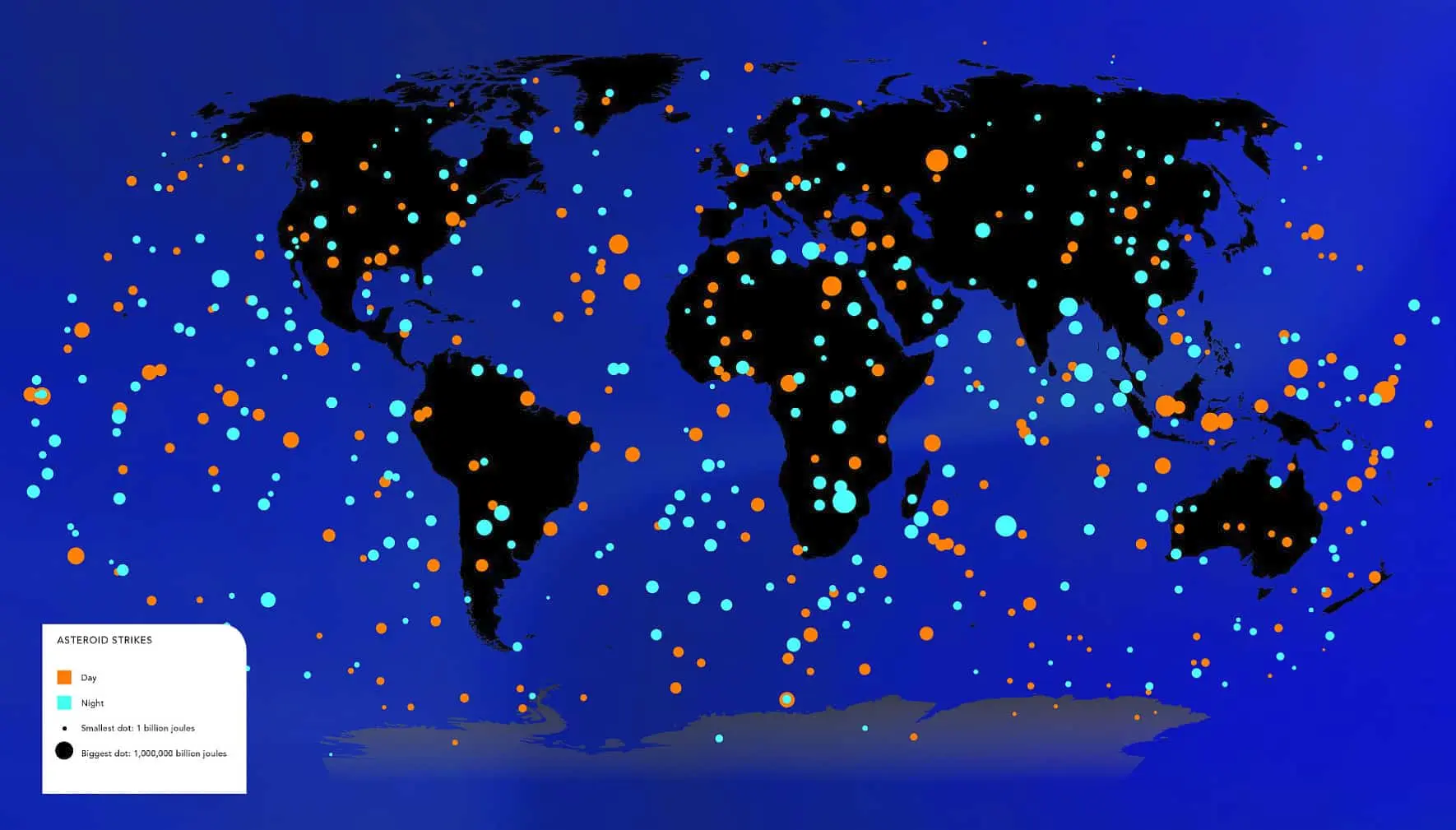NASA released the map below in November 2014. Its purpose is to show the distribution of planet-sunken celestial bodies using the Near-Earth Object Observation Program data. The map represents all perceived asteroid impacts in the category 1-20 meters in diameter, i.e., the smallest celestial body.
Yellow spots are the daylight, while blue indicates the nighttime impacts on the map. From there, it is clear that we can not hide from the asteroids because the impacts are spread evenly across the Earth’s surface.
Asteroids
An asteroid is an inferior, irregularly shaped, solid material, smaller than a dwarf planet, circling a star. Most asteroids are probably derived from the protoplanetary disk that did not form a planet when the star system formed; some had their moon.
In the Earth’s solar system, most asteroids are in the asteroid belt, elliptical circles around the sun between Mars and Jupiter, and the Kuiper belt, the Pluto neighborhood.
Interestingly, according to a 2009 study, sunscreen impacts the surface of asteroids faster than previously thought.
When two asteroids collide, a small family emerges from the pieces, most of which are still fresh. According to the observation, the parts’ aging process is very rapid, only 1 million years.
Meteor, meteorite
Meteors are light phenomena (commonly referred to as falling stars) created by meteoric circulating meteorites in the Earth’s atmosphere, and friction ionizes them due to their high speeds. Meteorites are considered tiny asteroids; their names differ only because of their size. Meteorites that do not burn in the Earth’s atmosphere and any piece that reaches the Earth are called meteorites.
Asteroid strikes mapped
Yellow spots are the daylight, while blue indicates the nighttime impacts on the map.

Image by New Views. Data source: Planetary Defense Coordination Office, NASA Headquarters.
The map “Asteroid Strikes Mapped” represents the frequency of asteroid impacts on Earth. The use of color-coding on the map is designed to convey important information about when the impacts occur. Yellow spots on the map indicate daylight impacts, while blue spots indicate nighttime impacts.
The yellow spots on the map correspond to asteroid strikes that occurred during daylight hours. These impacts would have been visible to anyone outside at the time and likely caused significant damage to the immediate area. These daylight impacts are generally considered more dangerous than nighttime impacts, as people are more likely to be outside and in the line of fire during the day.
The blue spots on the map, on the other hand, indicate nighttime impacts. These impacts would have occurred when most people were inside, asleep, and would have been less visible to the general public. While these nighttime impacts may not have caused as much damage as daylight impacts, they can still be dangerous and should not be underestimated. The blue spots on the map represent the impact that occurred at night time.
Overall, this map provides a clear and concise representation of the frequency and timing of asteroid impacts on Earth. The color coding allows the viewer to quickly and easily understand the presented information, and the map can be used to identify patterns and trends in asteroid impacts. It could be helpful for scientists and researchers studying the phenomenon of asteroid strikes, as well as for governments and organizations responsible for protecting people from the hazards of asteroid impacts.
